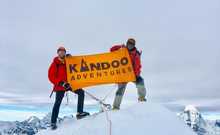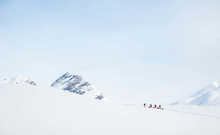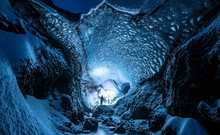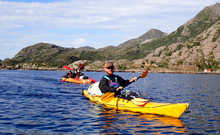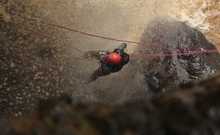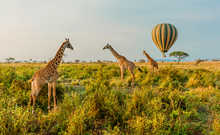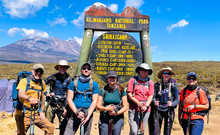Camping on the Inca Trail
On the Inca Trail you’ll be trekking up to 9 hours a day, covering rugged terrain and ascending to high altitudes. Immersing yourself in the natural landscapes as the Incas did centuries ago, this ancient pilgrimage is well worth the effort.
Camping on the Inca Trail, however, does not come without its own set of challenges. From cold nighttime temperatures to combatting symptoms of altitude sickness, many trekkers will struggle with Inca Trail camping to some degree which is why preparation is essential.
Over the years, Kandoo have gathered a few tips and tricks to help you have a more restful night when camping on the Inca Trail. In this blog, we explore why sleep at high altitude can be illusive and share our insider tips to help you wake up refreshed and ready to conquer the trail each day.
From specific nighttime equipment to managing altitude-related sleep disturbances, we provide insights that will prepare you for the epic adventure ahead. By following our advice, you’ll set yourself up for a more comfortable and enjoyable trek to Machu Picchu.
Where do you sleep on the Inca Trail?
During your trek to Machu Picchu, you’ll be staying in a designated, regulated campsite. As much as you may want to, you can’t just set up camp anywhere as the Inca Trail has strict regulations in place to protect the environment and preserve the ancient pathways for future generations.
When trekking with Kandoo, we provide the tents, and our porters will set up camp and take it down for you. This means you’ll arrive at camp with everything ready for you and you can focus on enjoying the experience. We use only the very best high-altitude mountain tents, Eureka K-2 XT, so you stay warm, dry and comfortable on your Inca Trail trek.
Staying well-fed on your trek is absolutely vital and you won’t be eating on the ground or huddled in your tent. Instead, your meals will be taken in a separate tent where you will be able to sit comfortably, while you relax and chat to your group and enjoy the wholesome food that our cook has freshly prepared for you. After a long day of trekking, these hearty meals will help refuel your body, keeping you energised for the next day’s adventure.
The Inca Trail camping facilities are basic and while each campsite has toilets, we also set up a private toilet tent for the exclusive use of our group at camp each evening. This is a simple facility that provides a little privacy and comfort whilst on the trail. The toilet tent will contain a sit-down toilet with a bag to collect waste. It’s also worth mentioning here that there are no designated shower facilities along the Inca Trail, so trekkers are advised to carry wipes for a quick freshen up.
Our pre and post trek accommodation is based in Cuzco, where there will be less basic facilities and showers, with an additional night in the Sacred Valley.
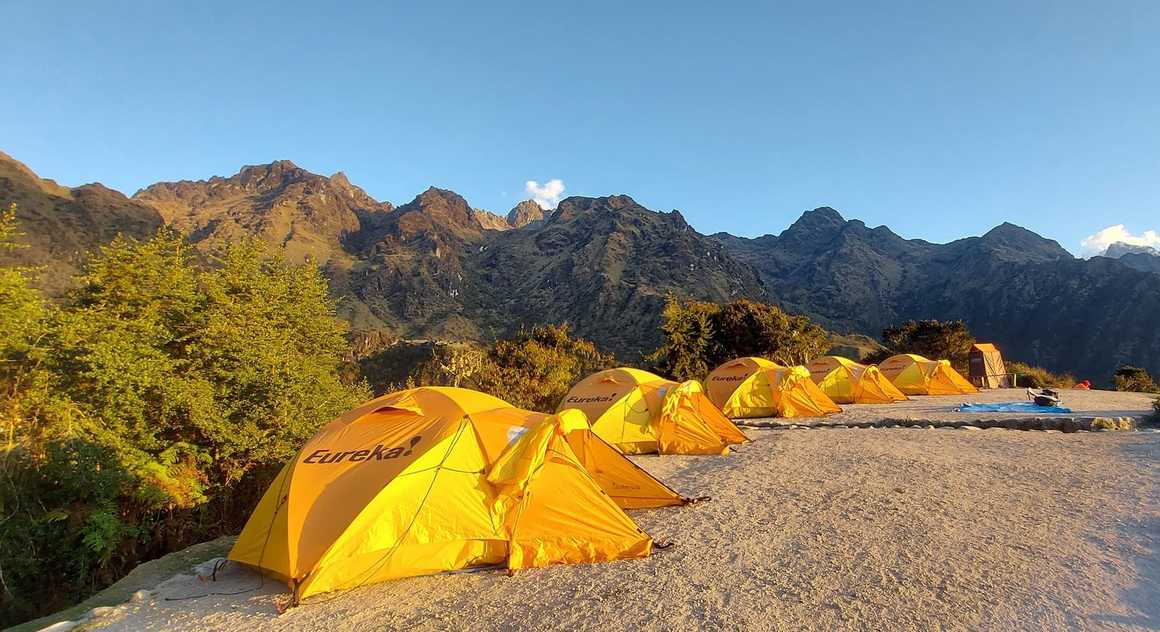
What nighttime equipment do I need on the Inca Trail?
Ensuring a good night’s sleep on the Inca Trail requires
specific equipment. Here we’ve listed some of the essentials you’ll need for camping
on the Inca Trail as well as some extra bits that will help make your sleep
more comfortable and restful.
Sleeping bag
Regardless of season, a warm sleeping bag is vital,
especially in the cold Peruvian nights. No matter the time of year, it's always
fairly cold at night and you'll want to purchase a 4-season or -20 degree Celsius
sleeping bag and compression sack. Out of the two types of sleeping bags (down
and synthetic), we recommend the warmer, more comfortable option of down. Alternatively,
there is the option to rent sleeping bags from Kandoo Adventures.
Sleeping mat
Kandoo Adventures provide trekkers with a comfortable foam
mattress, but you may like the additional comfort and warmth of a Thermarest
sleeping mat which can be bought online. Your sleeping mat should be thick and
insulated to keep you warm and comfortable throughout the night.
Pillow
A compact travel pillow can make a huge difference in your sleep quality. While some trekkers prefer to roll up a fleece or use their backpack as a makeshift pillow, having proper neck support will prevent stiffness and help you rest more comfortably. A camping pillow is an optional item that can help you sleep but it needs to fit in your daypack.
Sleeping mask
While the campsites on the Inca Trail are in remote areas, there are still light sources that can disrupt your sleep such as fellow trekkers with headlamps. A soft comfortable sleeping mask can help block out unwanted light making it easier to fall asleep and stay asleep. Alternatively, you could pull a beanie or neck gaiter over your eyes for a similar effect.
Earplugs
Anyone who has been kept up half the night by a loud snorer
will know the benefits of earplugs. Inca Trial camping can be busy, and
earplugs are excellent at dampening the sounds around you. After a tiring day
you don't want to be up all night, especially if you are a light sleeper.
They’re cheap, light and an effective tool to aid sleep. Not to mention they
will hardly take up any space in your bag at all.
Headtorch
A headtorch can be particularly useful for navigating your way around camp after dark, especially when nature calls during the night. The lighter the headtorch the better, we recommend no more than 270 grams, and you should make sure it has a long battery life.
Pee bottle
When trekking the Inca Trail, it’s recommended that you drink between 2-3 litres of water per day so it’s likely you will need to wee more than usual. If you prefer not leaving the tent at night, then a pee bottle could be your answer. We have a lot of positive feedback about the use of pee bottles from those who have completed this Peru trek to Machu Picchu before!
For a comprehensive list, our Peru packing list covers everything you need to trek to Machu Picchu.
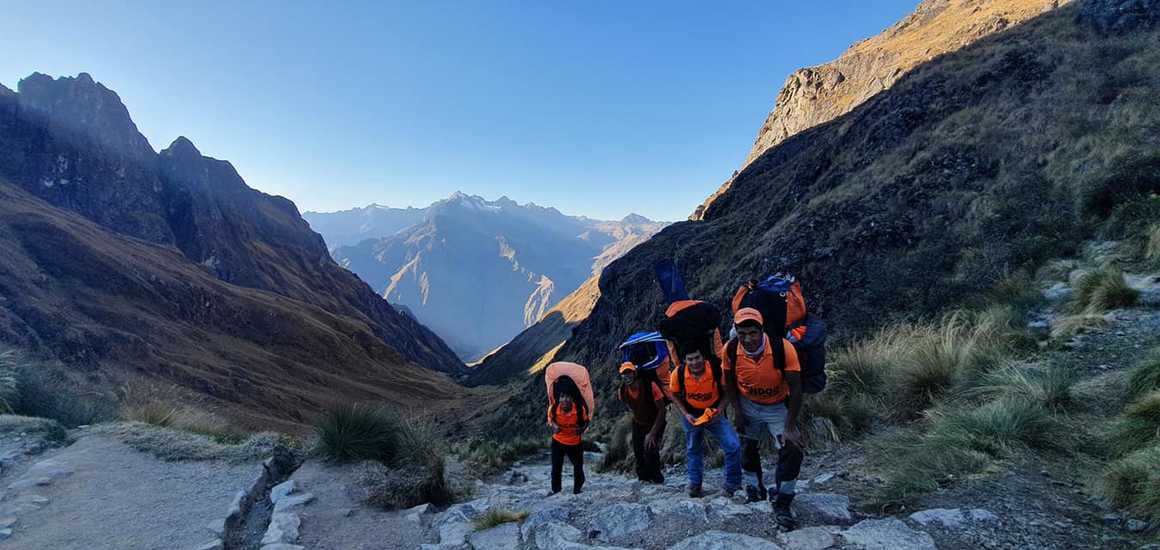
Why is it hard to sleep at high altitude?
Many trekkers find it hard to sleep at high altitude and these changes in sleep pattern can adversely affect trekking performance in the daytime. As you move up to a higher elevation, your breathing and heart rate increase to get more oxygen to your cells and restore normal oxygen levels. Your body will be working hard to adjust to the lower oxygen level and quality sleep can make all the difference in how you feel and perform on each day of the trek. This can lead to frequent awakenings, light non-restful sleep and less total sleep time.
You might also experience symptoms of altitude sickness such as headaches or nausea which can contribute to insomnia while camping on the Inca Trial. As you can imagine, having a pounding headache or feeling nauseated can be very disruptive of your sleep.
In addition to the physical effects of altitude, there are the psychological effects of a new environment. If you aren’t used to sleeping in a bed that isn’t your own, or aren’t used to camping altogether, this can also lead to restlessness.
The best way to aid sleep at high altitude is to follow our acclimatisation guidelines as best you can to decrease the likelihood of altitude sickness symptoms. This includes drinking plenty of water and following the golden rule ‘walk high, sleep low’ allowing your body enough time to acclimatise.
Additional tips for sleeping on the Inca Trail:
- Limit caffeine intake – caffeine is a well-known stimulant and reducing caffeine consumption, especially in the afternoon and evening, can allow you to wind down more easily at bedtime and promote better sleep.
- Hydrate early in the day – you should be drinking at least 2-3 litres of water every day on the Inca Trail. By drinking water earlier in the day, you will stay hydrated without causing frequent nighttime toilet trips, allowing better chance for a night of uninterrupted sleep.
- Magnesium – research shows that magnesium can improve sleep quality by helping to calm you and relieve anxiety so you could consider packing some for your Machu Picchu trek.
- Use Diamox to prevent altitude sickness – the drug Acetazolamide (Diamox) is widely considered to be effective in prevent altitude sickness. Diamox is taken before you start trekking and during your trek to prevent and treat symptoms of altitude sickness.
- Spend a few days in Cusco to acclimatise – the Peruvian city of Cusco sits at an elevation of 3,400 metres above sea level and is where you’ll start the Inca Trail from. Spending a few days in Cusco before the trek allows your body to adjust to higher altitudes, reducing the risk of altitude-related sleep disturbances. All trekkers travelling with Kandoo will spend at least a day in Cusco before departing on the trail, giving your body time to acclimatise.
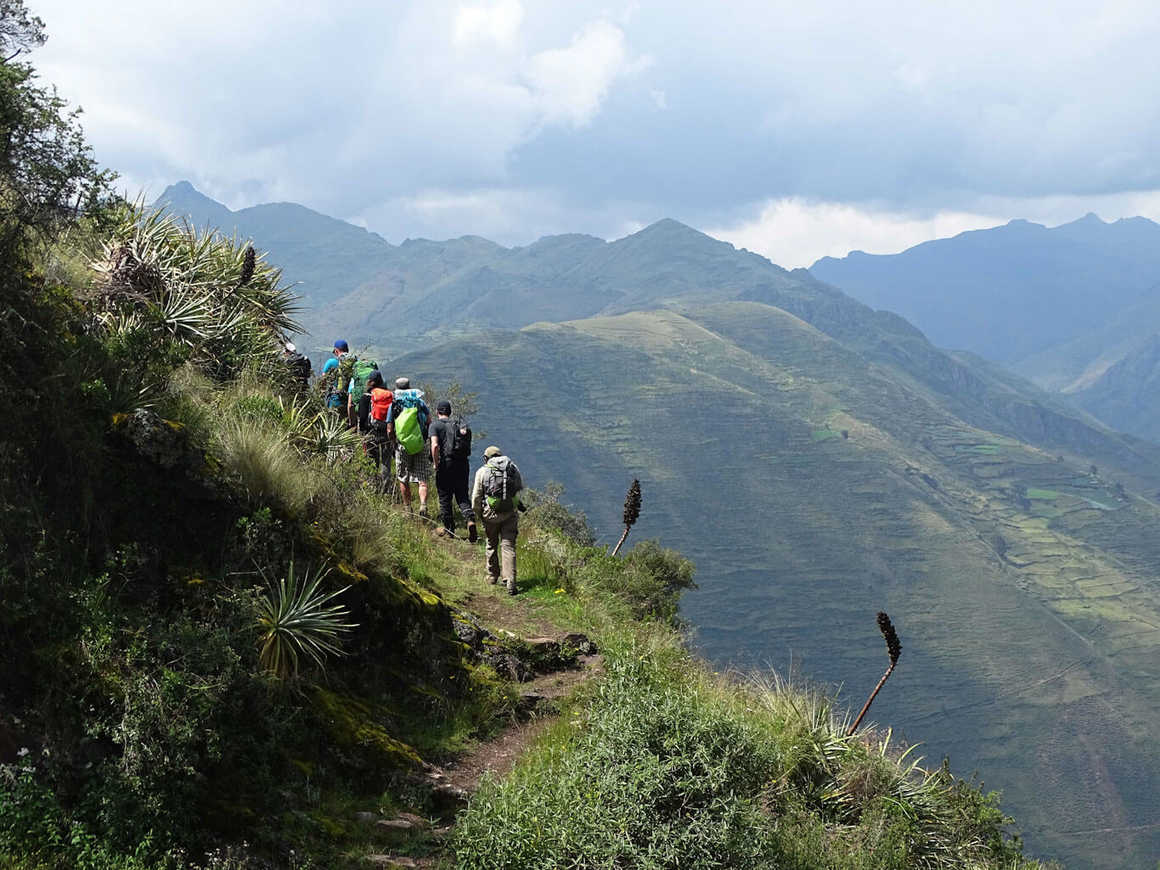
Camping on the Inca Trail is an unforgettable experience, immersing you in the stunning Andean landscape as you follow in the footsteps of the ancient Incas. With the right preparation, you’ll be able to rest well and fully enjoy every step of this incredible trek. Small adjustments like hydrating early in the day, limiting caffeine, taking magnesium and using Diamox can make a big difference in your sleep quality when Inca Trail camping and set you up for success on the journey. We can’t wait to welcome you on a Peru trek soon.

